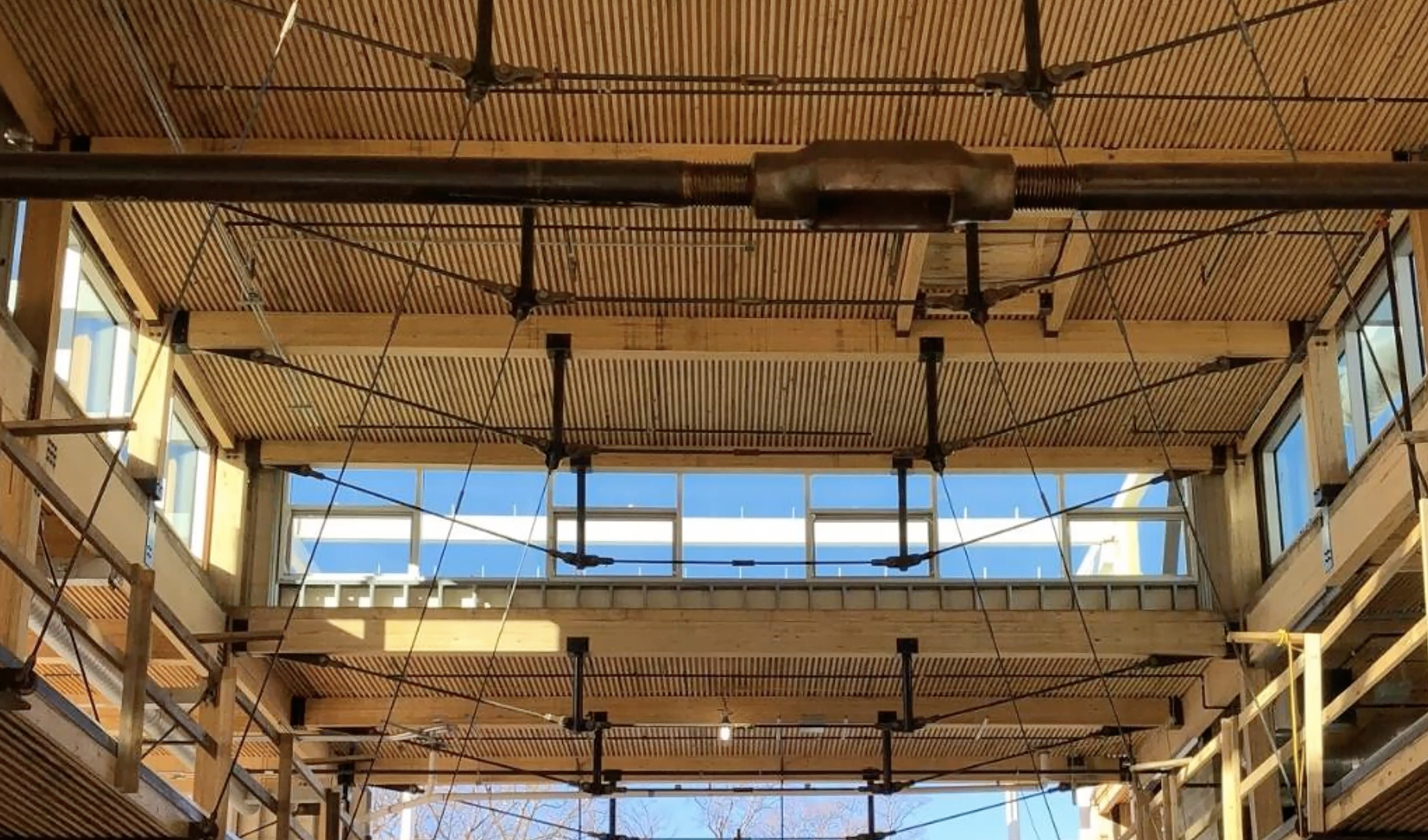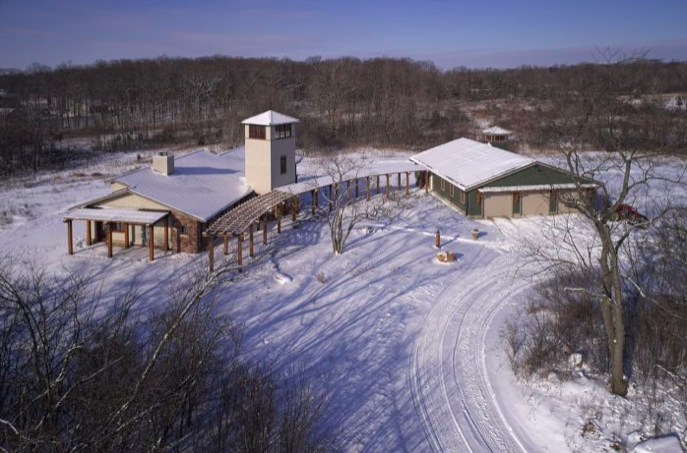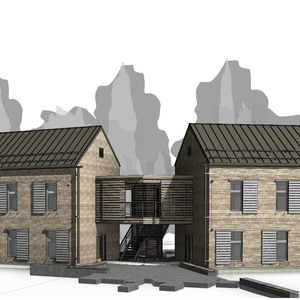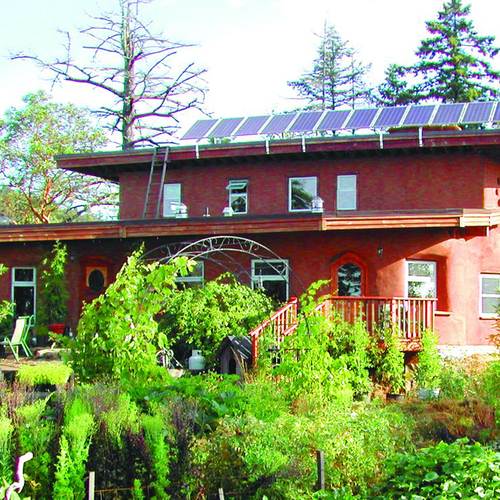Image Credit: Washington University
Image Credit: Washington University Tyson Living Learning Center opened in May 2009 on a satellite campus of Washington University in St. Louis. It is one of the first buildings to be certified to the Living Building Challenge standard.
If you ask the folks at the green-building certification program Living Building Challenge, there’s really nothing like occupying a building for a year and monitoring its performance if you want to learn how it operates and what might be improved.
It’s likely that most homeowners and builders, green or otherwise, would agree with that concept. But for the Living Building Challenge, it has become the centerpiece of its certification process, which requires meeting 20 sets of criteria — LBC calls them “imperatives” — and a 12-month performance evaluation once construction is completed and the candidate building is fully occupied.
GBA recently posted an item about the Greenest Home, a 2,000-sq.-ft. house being built on an infill lot in Peterborough, Ontario, by students and instructors at Endeavour Centre, a nonprofit building school in Peterborough. The Greenest Home is an LBC certification candidate and will be the core project of the center’s five-month Sustainable New Construction certificate program.
Like many building projects that push the performance envelope, LBC projects seem destined to become enduring case studies.
Envelope repair
That notion came into focus in a Daily Journal of Commerce commentary written by Amanda Sturgeon, certification director for LBC and its umbrella organization, the International Living Future Institute. Sturgeon reflected on the role of LBC’s 12-month monitoring requirement in addressing the performance of two recently certified projects: the Tyson Living Learning Center, a 3,000-sq.-ft. educational center near Eureka, Missouri, that is a satellite campus of Washington University in St. Louis; and the 5,902-sq.-ft. Hawaii Preparatory Academy Energy Lab in Kamuela, Hawaii.
One LBC requirement is net-zero-energy operation, achieved through design and construction techniques aimed at increasing energy efficiency and through the use of renewable-energy systems. The Tyson Living Learning Center was equipped with a roof-mounted photovoltaic system. During the first few months of monitoring, however, the building’s energy demand routinely outpaced the energy generated by the PV system, highlighting a disparity between the building’s modeling predictions and its actual performance.
The university had the building’s HVAC systems commissioned and audited construction details of the building envelope. Sections of the exterior walls and ceilings were missing insulation, Sturgeon wrote, and a blower-door test showed that and the shell was leaky. In addition, nearby trees were shading parts of the PV array. The school responded by upgrading the insulation levels and airtightness of the envelope and by adding two pole-mounted tracking PV arrays, bringing the capacity of the entire PV system to 23 kW.
The upgrades worked as expected, the building performed at net zero energy for the next 12 months, and the process underscored for LBC the importance of its 12-month performance requirement. “The need to demonstrate net-zero energy over the 12-month period before being able to certify under the Living Building Challenge,” Sturgeon wrote, “caused a tracking and analysis effort around the building performance that may not have occurred otherwise.”
Net positive
Notably different building performance issues arose during the monitoring of the Hawaii Preparatory Academy Energy Lab, which also began monitoring in May 2009. Design modeling for the building focused on ventilation, daylighting, and energy use. Because the building is intended for use as a teaching tool, instructors and students monitor its energy use in great detail.
Plug loads can be switched off when not in use, Sturgeon noted, and energy use can tracked according to time of day, helping the occupants accurately evaluate the building’s overall energy performance. The lab is equipped with a grid-tied PV system with a total capacity of 26 kW, although there are three arrays, each equipped with a different panel type. The building also features a solar thermal system and an experimental radiant cooling system, consisting of a radiant cooling array and a 25,000-gallon insulated storage tank.
The monitoring teams found that the lab was producing considerably more energy than it used — the excess power is used by other buildings on the academy campus — and so they set out to discover why.
Modeling of the building’s performance included both its ventilation system and, as backup, a cooling system. But the modeling was based on the tropical weather conditions in Hilo, on the eastern shoreline of the Big Island, because it was the only location at the time for which weather modeling data were available. The Hawaii Preparatory Academy Energy Lab is on the north side of the island at a higher elevation. The weather is cooler there in the summer, and so the Energy Lab remains an energy producer for the academy campus. Based on usage data collected so far, the lab uses 19,090 kWh per year and generates 38,994 kWh of electricity per year.
Weekly Newsletter
Get building science and energy efficiency advice, plus special offers, in your inbox.
















5 Comments
wait, high performance
wait, high performance construction without auditing insulation installation and blower door testing during construction?!?
23kW for a 3,000 sf learning center is ginormous - over double worst case scenario passivhaus in eureka...
I'm still waiting...
I'm still waiting to be "wowed" by one of these projects. So far I see bloated budgets, mediocre energy performance and a focus on energy production over conservation. I remain hopeful that future project teams will deliver the real deal. So far these look less like a design and construction paradigm shift, and more like "LEED-Platinum+"
Waiting for wow
John, did you see the LBC certified house in B.C., with the earthen walls? The owners have documented their process in direct and honest language, and it's a solid precedent for creating a "living building". Here's the link from the ILBI (or is it ILFI?) website: https://ilbi.org/lbc/casestudies/ecosense/home.
"Design" teams....
"Design" teams....
Tyson Learning Center
I saw a presentation about the Learning Center. The design staff made a number of choices that seemed odd to me.
Basically the shell of the building is not that great, in particular there is a lot of thermal bridging and operable glazed doors. Definitely built on the lines of a commercial building where shell loads are not accounted to be major factors, and ventilation/occupant loads are the major factors. I was kind of facepalming as the presenter stepped through the design, and it made perfect sense they found out they had half the PV they needed later.
You know, there's a lot of this kind of thing going on out there. Designers need to learn how to build good shells the same as the rest of us. It would be better if they could do so without building a bad one, but I guarantee this lesson is going to stick with them...also guarantee the architects who saw the presentation I did (at an AIA event BTW) learned a thing or two.
Log in or create an account to post a comment.
Sign up Log in